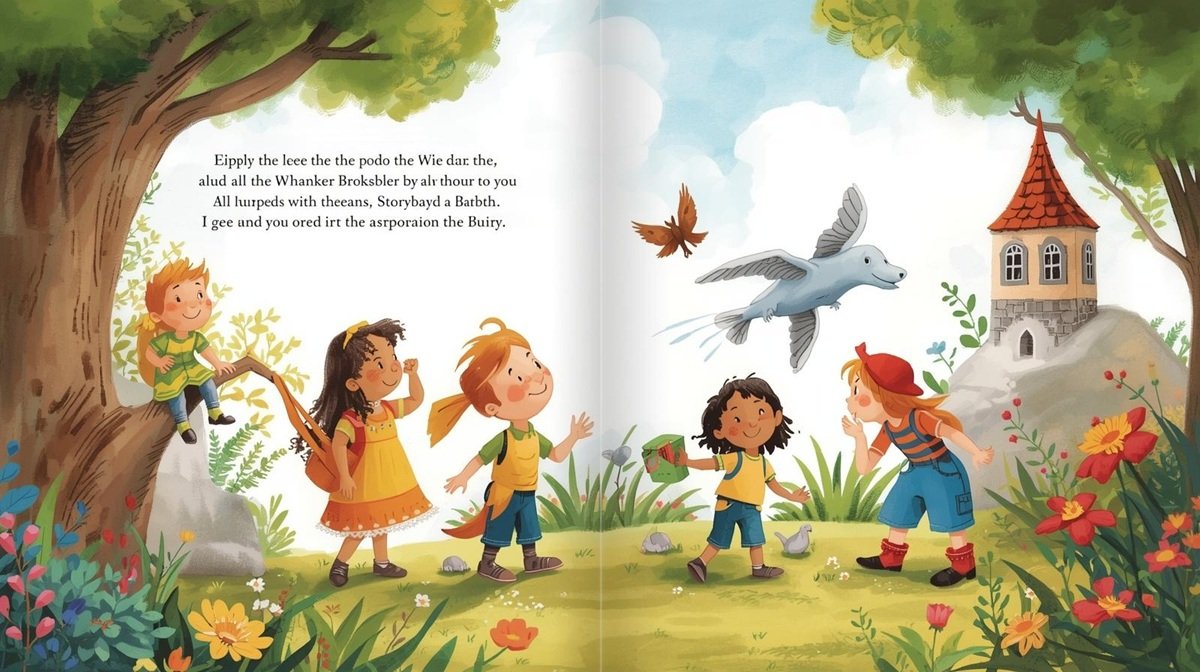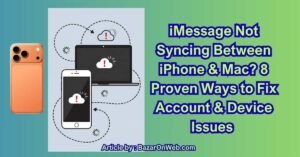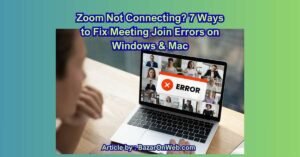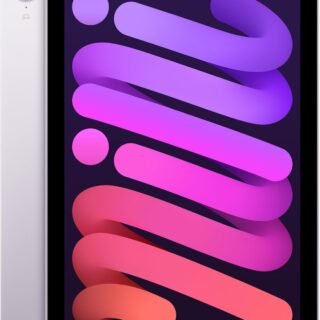Category
Popular Articles
- AI (12)
- Android (38)
- App Suggest (4)
- Apple (15)
- Apple TV (2)
- Bluetooth (3)
- Cars (2)
- ChatGpt (1)
- Chrome (2)
- Did you know? (1)
- E-Commerce News (1)
- Ecommerce Websites business (7)
- Electronics Shopping (5)
- Fashion Tips (3)
- Gaming (4)
- Google Gemini (3)
- Hair Care Tips (2)
- How to (13)
- iCloud (1)
- Infotainment System (1)
- Iphone (101)
- Job Posting (1)
- Lifestyle (3)
- Mac (20)
- Mobile Games (1)
- Netflix (1)
- Online Shopping Websites (2)
- Personal Finance Management (3)
- Product Reviews (3)
- Roku TV (4)
- Samsung (9)
- Shopping Tips (10)
- Spotify (1)
- Tech (92)
- Windows 11 (18)
- Zero Waste (3)
Discounted Products
-
 Leo Creation 144 TC Cotton Double Jaipuri Prints Flat Bedsheet(Pack of 1, Blue, Gree, Red, Grey, Light Grey)
Leo Creation 144 TC Cotton Double Jaipuri Prints Flat Bedsheet(Pack of 1, Blue, Gree, Red, Grey, Light Grey)
₹2,999.00Original price was: ₹2,999.00.₹329.00Current price is: ₹329.00. -
 Home Garage 210 TC Cotton King Floral Fitted (Elastic) Bedsheet(Pack of 1, Grey)
Home Garage 210 TC Cotton King Floral Fitted (Elastic) Bedsheet(Pack of 1, Grey)
₹999.00Original price was: ₹999.00.₹299.00Current price is: ₹299.00. -
 Goodrik 140 TC Cotton Double 3D Printed Flat Bedsheet(Pack of 1, Brown)
Goodrik 140 TC Cotton Double 3D Printed Flat Bedsheet(Pack of 1, Brown)
₹499.00Original price was: ₹499.00.₹229.00Current price is: ₹229.00. -
 GLOBALSHOP 350 TC Microfiber Double Floral Flat Bedsheet(Pack of 1, Multicolor)
GLOBALSHOP 350 TC Microfiber Double Floral Flat Bedsheet(Pack of 1, Multicolor)
₹1,250.00Original price was: ₹1,250.00.₹263.00Current price is: ₹263.00. -
 RisingStar 250 TC Microfiber King Printed Fitted (Elastic) Bedsheet(Pack of 1, FITTED-ROUND-CIRCLES-PREMIUM)
RisingStar 250 TC Microfiber King Printed Fitted (Elastic) Bedsheet(Pack of 1, FITTED-ROUND-CIRCLES-PREMIUM)
₹2,299.00Original price was: ₹2,299.00.₹299.00Current price is: ₹299.00. -
 Home Garage 210 TC Cotton King Floral Fitted (Elastic) Bedsheet(Pack of 1, Fitted Black Green)
Home Garage 210 TC Cotton King Floral Fitted (Elastic) Bedsheet(Pack of 1, Fitted Black Green)
₹1,299.00Original price was: ₹1,299.00.₹299.00Current price is: ₹299.00. -
 Home Garage 180 TC Cotton King 3D Printed Flat Bedsheet(Pack of 1, White)
Home Garage 180 TC Cotton King 3D Printed Flat Bedsheet(Pack of 1, White)
₹999.00Original price was: ₹999.00.₹229.00Current price is: ₹229.00. -
 Home Sizzler 153 cm (5 ft) Polyester Room Darkening Window Curtain (Pack Of 2)(Floral, Maroon)
Home Sizzler 153 cm (5 ft) Polyester Room Darkening Window Curtain (Pack Of 2)(Floral, Maroon)
₹799.00Original price was: ₹799.00.₹299.00Current price is: ₹299.00. -
 Panipat Textile Hub 152.4 cm (5 ft) Polyester Window Curtain (Pack Of 2)(Solid, Aqua)
Panipat Textile Hub 152.4 cm (5 ft) Polyester Window Curtain (Pack Of 2)(Solid, Aqua)
₹1,899.00Original price was: ₹1,899.00.₹299.00Current price is: ₹299.00. -
 Home Sizzler 214 cm (7 ft) Polyester Semi Transparent Door Curtain (Pack Of 2)(Floral, Maroon)
Home Sizzler 214 cm (7 ft) Polyester Semi Transparent Door Curtain (Pack Of 2)(Floral, Maroon)
₹1,199.00Original price was: ₹1,199.00.₹399.00Current price is: ₹399.00. -
 Home Sizzler 153 cm (5 ft) Polyester Room Darkening Window Curtain (Pack Of 2)(Floral, Brown)
Home Sizzler 153 cm (5 ft) Polyester Room Darkening Window Curtain (Pack Of 2)(Floral, Brown)
₹799.00Original price was: ₹799.00.₹299.00Current price is: ₹299.00. -
 Stella Creations 214 cm (7 ft) Polyester Room Darkening Door Curtain (Pack Of 2)(Abstract, Brown)
Stella Creations 214 cm (7 ft) Polyester Room Darkening Door Curtain (Pack Of 2)(Abstract, Brown)
₹1,299.00Original price was: ₹1,299.00.₹449.00Current price is: ₹449.00. -
 Homefab India 152.5 cm (5 ft) Polyester Room Darkening Window Curtain (Pack Of 2)(Floral, Light Blue)
Homefab India 152.5 cm (5 ft) Polyester Room Darkening Window Curtain (Pack Of 2)(Floral, Light Blue)
₹1,199.00Original price was: ₹1,199.00.₹319.00Current price is: ₹319.00. -
 Urban Home 214 cm (7 ft) PVC Transparent Door Curtain Single Curtain(Solid, Off White)
Urban Home 214 cm (7 ft) PVC Transparent Door Curtain Single Curtain(Solid, Off White)
₹699.00Original price was: ₹699.00.₹203.00Current price is: ₹203.00. -
 Panipat Textile Hub 213 cm (7 ft) Polyester Door Curtain (Pack Of 2)(Solid, Brown)
Panipat Textile Hub 213 cm (7 ft) Polyester Door Curtain (Pack Of 2)(Solid, Brown)
₹1,199.00Original price was: ₹1,199.00.₹349.00Current price is: ₹349.00.
Affiliate Links
Promotion

Nice — let’s make a kid’s story (or any storybook) with AI and get it up for sale on Amazon Kindle (KDP). I’ll walk you — step-by step — through the whole process: idea → AI drafting → editing → images → KDP-ready files → upload → publish & promote. I’ll also flag the legal and KDP rules you must follow. (I speak from experience juggling work, kids, and a tiny publishing side-project — so this is practical, not theoretical.)
1) Plan your book (30–90 minutes)
Decide: format (picture book / middle-grade / short chapter book), target age, tone, length, and whether it’s illustrated.
Quick checklist:
- Age group & approximate word count (picture book 300–1,000 words; early reader 1,000–5,000; middle grade 15k+).
- Story hook, main character, one-line premise.
- Visual needs (full-page art, spot illustrations, chapter headers).
2) Draft the story with AI (1–3 hours)
Use an LLM (e.g., ChatGPT, Claude, Gemini) to draft scenes or the whole story. Always prompt precisely and iterate.
Prompt template (children’s picture book, 500 words):
“Write a 500-word picture book for ages 4–6 about a small fox who can’t fall asleep. Keep sentences short, use gentle humor, 8–10 scenes that could map to pages, include a simple moral about kindness. End with a warm closing line.”
How I work in practice:
- Ask the AI for a 1-paragraph outline.
- Request scene-by-scene breakdowns.
- Generate final prose one page/scene at a time (so it’s easier to edit and to match illustrations).
- Run multiple versions, keep the best lines, and combine them.
Prompt tip: ask the AI to output “Page 1:”, “Page 2:” etc., so you get a ready page map for an illustrated book.
3) Edit, humanize, and test (2–6 hours)
AI drafts are a powerful start but always require human editing:
- Tighten language for rhythm and reading aloud.
- Simplify vocabulary for the age group.
- Check for accidental clichés or factual errors.
- Read it aloud (or have your kids read it) — rhythm matters.
Get beta readers (parents, teachers, librarians). Consider hiring a professional copyeditor for children’s text.
4) Create or commission artwork (varies)
You can use AI image generators (DALL·E, Midjourney, Stable Diffusion) or hire an illustrator.
If you use AI images:
- Carefully craft prompts (style, palette, composition, character continuity).
- Ask for multiple variations and keep a record of prompts.
- Check licensing/ToS for commercial use — some services require a paid plan for commercial rights (e.g., Midjourney’s ToS/rights). Always confirm before publishing. (Midjourney)
Tools for kids’ books on KDP: use Kindle Kids’ Book Creator for picture books (imports PNG/JPG/PDF) — it helps with page layout and is tailored for illustrated books. (Kindle Direct Publishing)
5) Prepare files and format for Kindle (1–4 hours)
- For text-heavy ebooks: use Kindle Create or export EPUB/KPF — KPF is preferred for Kindle to avoid formatting issues. (Kindle Direct Publishing)
- For picture books: create full-page images at high resolution and assemble in Kids’ Book Creator or as fixed-layout EPUB.
- Cover: design a strong thumbnail (recommended: 2560×1600 px for eBook cover; print covers require bleed & 300 DPI). (Kindle Direct Publishing)
Quick formatting tips:
- Use KPF from Kindle Create if possible (best Kindle compatibility). (Kindle Direct Publishing)
- Preview in Kindle Previewer to check layout on different devices.
6) KDP account & required details (30–60 minutes)
- Create a KDP account (or log in with Amazon). KDP lets you publish eBooks and print books for free. (Kindle Direct Publishing)
- For print books, you can get a free KDP ISBN (note: KDP ISBNs are platform-restricted). If you want your own universal ISBN, buy one from Bowker or your local agency. (Kindle Direct Publishing)
7) Important: AI disclosure & content rules
Amazon KDP requires you to inform them if text, images, or translations are AI-generated when you publish or republish a book. (You must disclose AI-generated content; KDP distinguishes AI-generated vs AI-assisted.) Read KDP content rules carefully. (Kindle Direct Publishing)
Also avoid plagiarism: do not copy existing copyrighted stories or images. Run plagiarism checks if you used public web sources or scraped inputs.
8) Upload to KDP: step-by-step
- Bookshelf → Create new Kindle eBook.
- Enter title, subtitle, author name, edition, description, keywords, and categories. (Keywords + category choices = discoverability.)
- Upload manuscript (KPF/EPUB) and cover (JPEG). Preview the book. (Kindle Direct Publishing)
- Select territories, pricing, and royalty option (70% vs 35% — check price limits and delivery cost implications). (Kindle Direct Publishing)
- Optionally enroll in KDP Select (90-day exclusivity in exchange for Kindle Unlimited & promotional tools). (Kindle Direct Publishing)
9) Launch & marketing
- Create a short launch plan: cover reveal, email list, 1-week discount, Amazon Ads (sponsored product), social media posts, and outreach to bloggers/reviewers.
- Use Look Inside (Amazon’s preview) to hook readers on first pages.
- Encourage early reviews (ethically): ask friends/family & reviewers.
10) Post-launch maintenance
- Track sales & KENP (if in KU).
- Update description, price, or cover if performance lags.
- Re-run ad campaigns and promos.
Legal & ethical checklist (must do)
- Disclose AI-generated content to KDP. (Kindle Direct Publishing)
- Confirm you have commercial rights for every image (check AI tool ToS). (Midjourney)
- Don’t infringe trademarks, real people’s likenesses, or copyrighted characters.
- Keep records of prompts, image licenses, and editing steps (helpful if Amazon asks).
Quick prompt examples (paste & tweak)
Story skeleton:
“Create a 6-scene outline for a 600-word picture book about a shy rabbit learning to sing. Audience 4–6. Include page breaks and a final two-line closing.”
Illustration prompt (AI):
“Full-page children’s book illustration of a small orange rabbit singing under moonlight, watercolor style, soft palette, 300 DPI, character centered left, room for text on right.”
Final thoughts (Jessica’s mom-marketer tip)
Start small: write one polished picture book, publish, learn the formatting and KDP flow. Use AI to speed drafting and generate illustration ideas — but edit heavily and always confirm rights. The learning curve is mostly format + KDP rules; once you master that, creating the next book gets faster.
Written by Bazaronweb
Latest Tech Articles
- 5 Ways to Backup and Restore Registry Settings in Windows

- iMessage Not Syncing Between iPhone & Mac? 8 Proven Ways to Fix Account & Device Issues

- Outlook Not Receiving Emails? 8 Proven Fixes for Windows, Mac & Mobile

- Zoom Not Connecting? 7 Ways to Fix Meeting Join Errors on Windows & Mac

- Microsoft Teams Not Opening? 5 Proven Fixes to Restart Your Workspace

Products
-
![Apple Watch Ultra 3 [GPS + Cellular 49mm] Running & Multisport Smartwatch w/Rugged Titanium Case w/Black Titanium Milanese Loop - M. Satellite Communications, Advanced Health & Fitness Tracking](https://bazaronweb.com/retailstores/wp-content/uploads/2025/09/apple-watch-320x320.jpg) Apple Watch Ultra 3 [GPS + Cellular 49mm] Running & Multisport Smartwatch w/Rugged Titanium Case w/Black Titanium Milanese Loop - M. Satellite Communications, Advanced Health & Fitness Tracking
Apple Watch Ultra 3 [GPS + Cellular 49mm] Running & Multisport Smartwatch w/Rugged Titanium Case w/Black Titanium Milanese Loop - M. Satellite Communications, Advanced Health & Fitness Tracking
-
 Apple iPad mini (A17 Pro): Apple Intelligence, 8.3-inch Liquid Retina Display, 256GB, Wi-Fi 6E, 12MP Front/12MP Back Camera, Touch ID, All-Day Battery Life — Purple
Apple iPad mini (A17 Pro): Apple Intelligence, 8.3-inch Liquid Retina Display, 256GB, Wi-Fi 6E, 12MP Front/12MP Back Camera, Touch ID, All-Day Battery Life — Purple
-
 Apple AirPods Max Wireless Over-Ear Headphones, Active Noise Cancelling, Transparency Mode, Personalized Spatial Audio, Dolby Atmos, Bluetooth Headphones for iPhone – Space Gray
Apple AirPods Max Wireless Over-Ear Headphones, Active Noise Cancelling, Transparency Mode, Personalized Spatial Audio, Dolby Atmos, Bluetooth Headphones for iPhone – Space Gray
-
 Apple AirPods Pro 2 Wireless Earbuds, Active Noise Cancellation, Hearing Aid Feature, Bluetooth Headphones, Transparency, Personalized Spatial Audio, High-Fidelity Sound, H2 Chip, USB-C Charging
Apple AirPods Pro 2 Wireless Earbuds, Active Noise Cancellation, Hearing Aid Feature, Bluetooth Headphones, Transparency, Personalized Spatial Audio, High-Fidelity Sound, H2 Chip, USB-C Charging
-
 Leo Creation 144 TC Cotton Double Jaipuri Prints Flat Bedsheet(Pack of 1, Blue, Gree, Red, Grey, Light Grey)
Leo Creation 144 TC Cotton Double Jaipuri Prints Flat Bedsheet(Pack of 1, Blue, Gree, Red, Grey, Light Grey)
₹2,999.00Original price was: ₹2,999.00.₹329.00Current price is: ₹329.00.
Leave a Reply